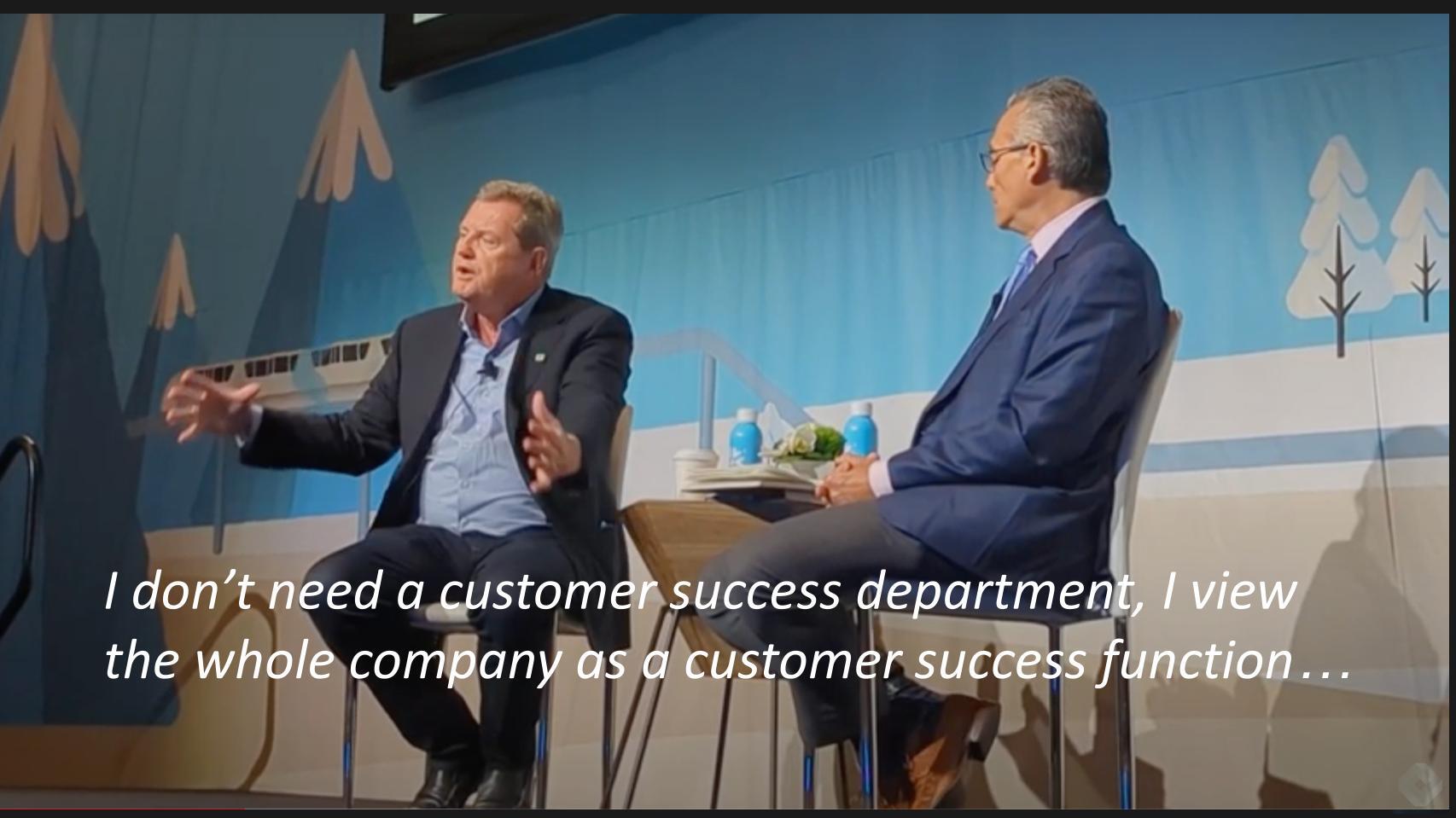
Revenue recognition shouldn’t slow your business down—but too often, it does. As a CFO, I’ve seen how rigid systems, compliance hurdles, and manual workarounds make closing the books a nightmare.
We put together this free report outlining the biggest revenue recognition challenges CFOs and controllers are facing—and what the right solution should look like. If revenue complexity is holding your team back, this will help you understand how to fix it.

Snowflake famously doesn’t have a Customer Success team. They claim everyone owns the customer.
Hard to argue with one of the (cue Bill Simmons voice to insert a seemingly random list range) “four-to-seven greatest infrastructure companies of all time!”
But for the rest of us mere mortals who don’t have net dollar retention rates of like 172% and freakishly great product-market fit, we do have dedicated CS teams… and we value the hell out of them.
It’s just, well, hard to pin down that value. We know CS helps. We just don’t always know if we’re investing the right amount.
After a recent convo with Tom from Minnesota (shoutout to reader Tom), I landed on a working framework: the Customer Success Ratio.
Here’s the gist:
Customer Success Ratio = CS Investment / Net Expansion Dollars
CS Investment includes people, tools, travel… basically everything you spend on the CS team.
Net Expansion Dollars are your NDR-driven ARR gains, i.e. ARR above 100% retention.
Let’s make it real. Say you’re a $10M ARR company, and you’re targeting a minimum NDR of 110%. That means you expect at least $1M in net expansion ARR next year.
If you’re aiming to breakeven on that effort (not a bad baseline), then a $1M investment in CS would be rational.
Of course, customers (hopefully) stick around longer than one year. So your expansion dollars today kick off an annuity stream, and your CS team looks even better over time. Your margin profile benefits, too; expansion ARR is your cheapest dollar, and CS is often your cheapest channel (if it’s working right).
But here’s the nuance…
Not all CS teams are doing the same job. Some are classic account managers driving renewals and expansions. Some are merely order takers booking renewals, and not going the extra mile to add more products or licenses. And others are glorified onboarding specialists: running playbooks, standing up integrations, configuring data models. The latter is professional services work, even if you don’t call it that on the org chart (or charge for it).
If your CS folks are doing deployment work, congrats - you’re running a services org without billing services rates. In those cases, part of their cost might actually belong in COGS or should be offset by billable revenue. And a whole other dimension of efficiency to track.
And don’t even get me started on companies that hide onboarding costs, devoid of any quota, in Sales & Marketing. (Looking at you, Rick. You lying bastard.)
Quick reminder: net means net.
The $1M in net expansion we mentioned earlier is after churn and downsell. So if you’re expecting $200K in churn and $50K in contraction, you need $1.25M in gross expansion bookings to net out at $1M. That’s the real mountain your CS team is climbing.
And yes, before you @ me… sales often gets paid on those expansion dollars too. That’s fine.
You’re not mistakenly double-counting. You’re acknowledging reality. Sales managers get comped on rep deals. BDRs create pipeline for AEs. Channel partners take a cut. Scaling a go-to-market engine means overlapping incentives. Always has.
Which is why you should sanity check this ratio alongside your total effective commission stack (I’ve written about that here).
TL;DR:
Aligning your net dollar retention rate expectations to your customer success team costs helps keep everyone honest, and gives you solace when you look at your P&L.
If your CS team isn’t tied to a dollar number, they’re not doing Success. They’re doing Support. And support without a target? That’s a cost center. A necessary one, but don’t pretend otherwise.
The Customer Success Ratio isn’t perfect. No metric is. I write about that all the time. Metrics in isolation are weapons of mass destruction.
But this one? It’s a sharp, simple BS detector. A gut check for how much you’re spending to protect and grow your base.
Use it accordingly.
Everyone celebrates the big exit.
But what if the exit isn’t your end?
What if you’re expected to stick around for another run?
Welcome to the “second bite.”

For private equity-backed executives, a liquidity event often isn't the final chapter—it’s halftime. When your company is sold to another PE fund or strategic acquirer, and you stay on in your role, you're not cashing out completely. You're reinvesting, re-upping, and recommitting.
This second act can be extremely lucrative—or quietly painful—depending on how the terms shake out.
Let’s break down how it works, what to watch out for, and what kind of comp packages typically come with a second bite. Subscribe to LFL (for free) below and read the whole piece.
The Run the Numbers Podcast
Persistence pays off! After courting Andrew Casey for a year and a half plus, I got to jam with the CFO of Amplitude on RTN.
This pod has the MOST signal per minute you could ask for when it comes to being an Operational CFO. A true masterclass. We discuss:
Reporting to BOTH Michael Scarpelli and David Schneider at ServiceNow (talk about legendary coaching trees)
Structuring deals that work for both sides
Transparency in usage based pricing
Pros and cons of multi year deals
What defines "enterprise"
Establishing a high performing deal desk
Give it a listen if you want to make news, not just report it each quarter.
Quote I’ve Been Pondering
“Lit orange now by the last of the sun, Quenton Cassidy cruised down the darkening hillside with languid strides, thinking, I may be older and I may nap too long, but I can still scald dogs down to Thunder Lake and back.
Breaking out into the thin sunlight of the open pasture above his cabin, he thought: I can still have days like this”
-Again to Carthage, by John L. Parker
